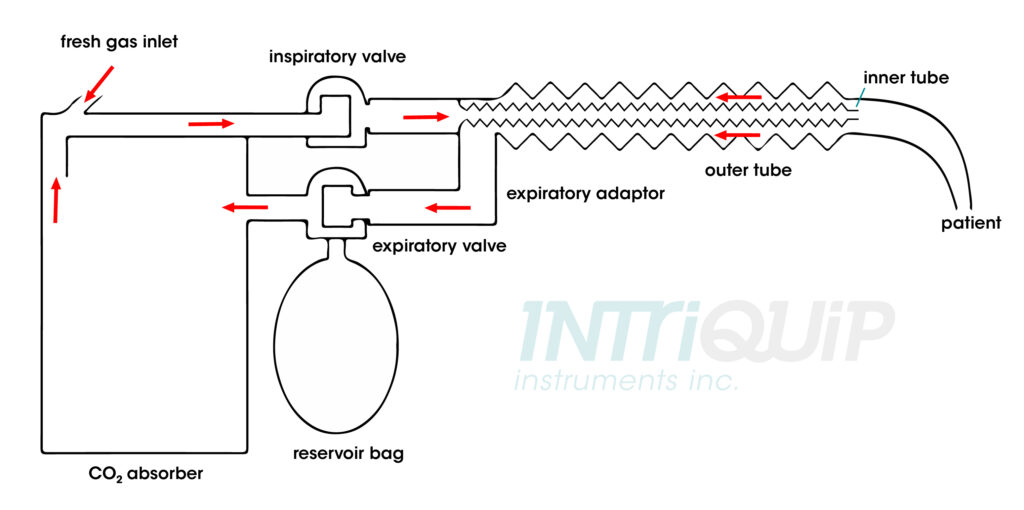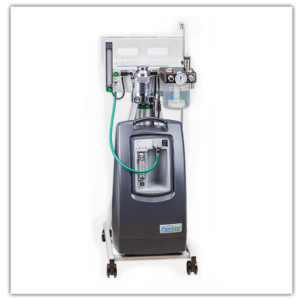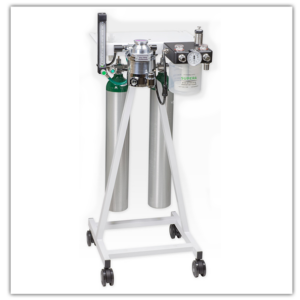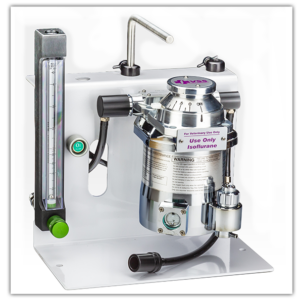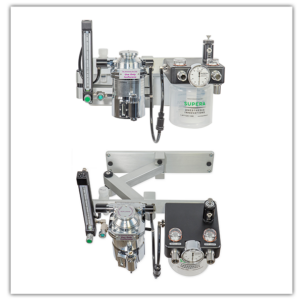Veterinary Anesthesia Circuits Explained:
Non-Rebreathing Circuit VS Rebreathing Systems
Non-Rebreathing Circuit (NRB, BAIN) VS Rebreathing (circle) Systems.
This brief summary of the two most popular anesthesia circuits currently in use is intended as an easy reference to simplify and explain the strengths and advantages of both systems.
Intriquip often recommends that general small animal practices have the capability for both, Rebreathing and Bain anesthesia. This is made easy with the Moduflex product line as the rebreathing models only require a Bain adapter to perform Bain anesthesia as well!
Non-Rebreathing Circuit (NRB, Bain)
The non-rebreathing circuit is a physically simpler system. In this circuit, oxygen flows through a flow meter and into the vaporizer. At this point, gases exiting the vaporizer go directly to a hose for delivery to the patient with no inhalation flutter valve. Exhaled gases pass through another hose and may enter a reservoir bag, but do not enter a CO2 absorber. The gas is then released into a scavenger.
- Used for patients weighing less than 10 pounds.
- Several types exist (Bain, Ayres T, Norman mask elbow, etc.)
- All are modifications of the same basic design.
- Differ in location of fresh gas inflow, position of reservoir bag and location of exhalation port.
- On inspiration fresh gas is inhaled from both the narrow tubing from the anesthesia machine and the corrugated tubing leading away from the endotracheal tube connector.
- Absence of soda lime means rebreathing must be prevented via high oxygen flow. Inadequate flow rates allow CO2 to be re-breathed and may create respiratory acidosis.
- Minimum oxygen flow-rates of at less 200-300ml/kg/minute will prevent significant rebreathing in most patients by flushing out expired gases during the pause between breaths.
Advantages of Non-Rebreathing Circuit
- Less resistance to breathing.
- Less mechanical dead space.
- Rapid manipulation of anesthetic depth: in NRB the fresh gas inlet is adjacent to the endotra-cheal tube connection; changes in flow meter or vaporizer settings affect the inspired gas concentration almost immediately. (Volume of rebreathing circuit with a 3L bag is approxi-mately 6L. Volume acts as a “buffer” to changes in anesthetic concentration.)
Disadvantages of a Non-Rebreathing Circuit
- High flow of dry cool gas is administered to the patient, which can cause significant heat and humidity loss.
- This can contribute to hypothermia, especially in small patients.
- Significantly higher waste of both carrier gas and anesthetic agent results in increased costs.
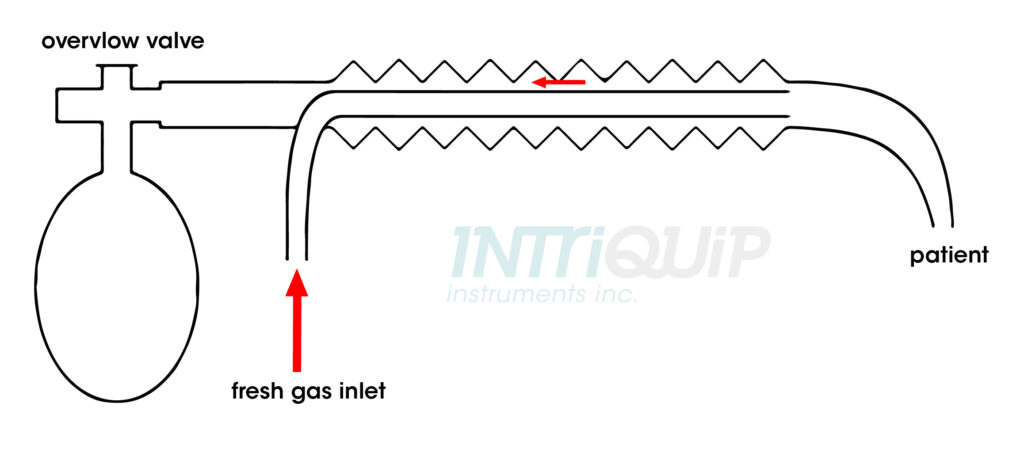
Rebreathing (Circle) System
With rebreathing anesthesia the flow of gas through the machine is circular: reservoir bag–inhalation valve–inspiration hose–animal–expiration hose–exhalation valve–carbon dioxide canister–back to the inhalation valve.
- A rebreathing circuit is used for patients weighing over 10 pounds.
- Methods
- Closed system – Pressure relief valve is completely closed
- Used only with low flow techniques in which oxygen delivery is calculated to meet metabolic needs. We do not use these techniques in the field.
- Semi-closed system – Pop-off valve is open or partially closed.
- Used with medium and high-flow techniques in which oxygen delivery exceeds oxygen consumption and excess gases are eliminated through a pressure relief valve.
- Advantages of medium and high-flow include safety to the animal and more rapid change in anesthetic concentration.
Advantages of rebreathing circuit
- Economical: expired oxygen and anesthetic vapor are re-circulated and reused, using less oxygen and anesthetic agent compared with a non-rebreathing system.
- Humidification of inspired gas, preserving heat and moisture of the patient.
- Warmth: during the absorption of CO2 in soda lime, heat is generated. This helps to preserve further body heat.
Disadvantages
- Resistance to gas flow, primarily caused by one way valves in the system, soda lime canister, and pressure relief valve.
- Can make it difficult for small patients to ventilate.
